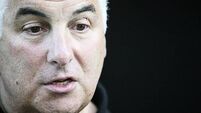Brain food for children

This group of fatty acids boosts their brains, strengthens their immune systems and lifts their mood. It is also claimed they improve behaviour, reduce anxiety and improve language. It might sound too good to be true but scientific research continues to show impressive results.
As a parent, you’re told to feed children oily fish twice a week, but this is easier said than done. Children like to eat plain foods and most baulk at the sight and smell of fish. With mercury levels high in some fish, there are times when it’s easier to get them to take a chewy supplement.
But with so many supplements on the market these days, it is difficult to choose the right one. It’s very confusing when packaging is bombarding you with information about DHA and EPA, and omega 3 and 6.
Growing brains and bodies need ongoing nourishment from omega 3s (salmon & tuna are good examples) but if children are consuming too many omega 6s (the oils and margarines found in crisps & biscuits) their brains can become sluggish, which affects concentration, learning and behaviour.
If your child struggles to sit still for five minutes and has behavioural issues, it could be that their brains are lacking these essential fats.
When my eldest was starting school I worried that he wouldn’t be able to sit still and absorb the teaching, so I decided to try him on a high-strength omega 3 product aimed at five-year-olds. I looked around at all the deluge of products and I was baffled by the amounts of DHA and EPA. Which one was more important for a hyperactive and sometimes oppositional child?
It turns out that a product high in EPA is good for getting them to learn and concentrate, especially if they have hyperactive tendencies. It is recommended in a dose of 500mg a day at around the age of five. For under fives, DHA is the one to give because it lays the foundations during the early years of rapid mental and physical development and can help to stabilise their nervous system. That’s why many baby milk manufacturers are now adding DHA to their formulas and it is recommended for pregnant women in supplement form.
After six months of trying every omega 3 supplement on the market, talking to experts, reviewing all the scientific research and watching my three children develop rapidly after taking them, I wanted to share my findings from this very personal and admittedly limited research project with other parents.
I’m not a scientist, just a busy mum-of-three who is aware of something lacking in modern diets that has made a difference to my kids. Most of my friends are now giving omega 3 to their children with noticeable improvements. I watched my energetic boy turn into Picasso almost overnight, able to sit down and concentrate far better than I’d ever expected.
My ranking system is based on the listed nutritional values of EPA and DHA, relative cost per dose and the taste reactions of my own children.
It’s worth remembering, that children won’t be harmed by omega 3, once they don’t go over the recommended dosage. The upper limit of 3000mg is so high that it’s unlikely to ever be reached.
Price: €21.99 (36c per capsule).
Flavour: Orange Recommended age: 5+.
DHA: 56mg per capsule.
EPA: 254mg per capsule.
Kids verdict: “Yummy, just like oranges.”
Mum’s verdict: Their favourite.! They are expensive, but the kids love them and they are the highest in EPA and have Vitamin C as well.
Price: €14.99 (33c per capsule)
Flavour: Lemon.
Recommended age: 5. years + Amount of DHA: 240mg per capsule.
EPA: 240mg per capsule.
Kids verdict: “OK, taste quite nice.”
Mum’s verdict: Took some getting used to the sharp lemon taste, but they like them now. Expensive but I found a pharmacist selling them at an introductory half price. Also contains small amounts of vitamin D and E. There’s a lot of fancy packaging (a screw-top tin inside a nice box).
Price: €4.99 (16c per capsule, the cheapest).
Flavour: Orange.
Recommended age: 3+
DHA: 29mg per 1 chew.
EPA: 116mg per 1 chew.
Kids verdict: “Nice, easy to chew”.
Mum’s verdict: Also contains vitamin A, C, D & E so an all round multi-vit for your kids. Not a bad amount of EPA per capsule considering cost. Kids do seem to prefer orange taste.
Price: €21.99 (36c per capsule).
Flavour: Strawberry. Recommended age: 5+
DHA: 54mg per capsule.
EPA: 245mg per capsule.
Kids verdict: “Nice, can I have another?”
Mum’s verdict: High in EPA like its sister product but might not appeal to some kids as they look like adult omega 3 tablets and you have to bite through the hard skin which takes a while to be chewed and swallowed. Label should be clearer as age not listed on packet.
Price: €11.99 (20 cent per capsule).
Flavour: Strawberry. Recommended age: 3+
DHA: 29mg per 1 chew.
EPA: 93mg per 1 chew.
Kids verdict: “Bit sweet but OK.”
Mum’s verdict: Shiny packaging that catches your eye in pharmacies. DHA value is low. Equazen sister product is a liquid bottle which contains the same amount of omega 3, costing €14.99 for a 200ml bottle.
Price: €7.79 (26c per pastille).
Flavour: Orange & Lemon or Summer Fruit. Recommended age: 3+
DHA: 100mg per pastille.
EPA: 6mg per pastille.
Kids verdict: “Like jellies.”
Mum’s verdict: Quite a bit of DHA in a product that looks and tastes like sweets.










